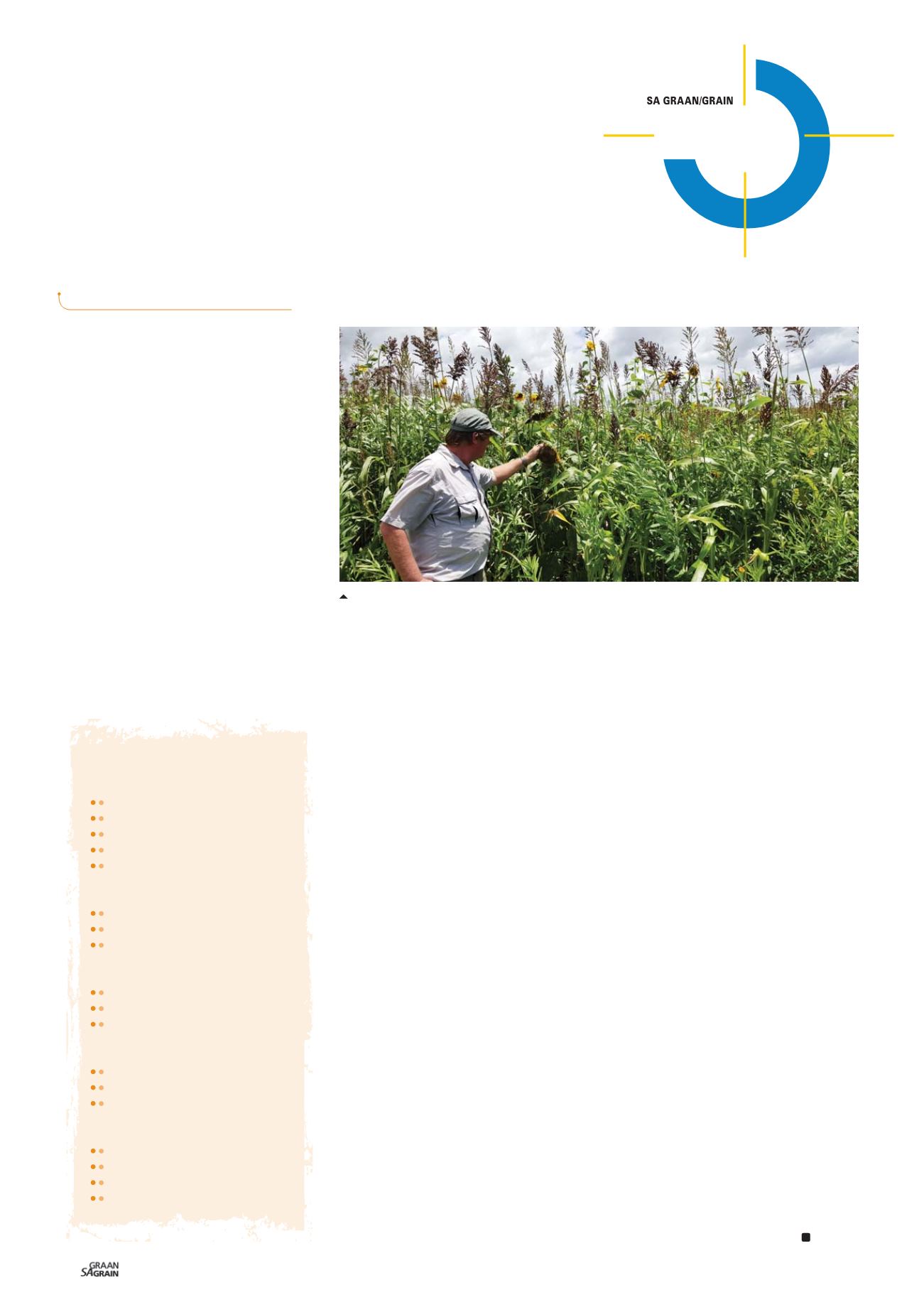

November 2018
46
The secret to the
PERFECT cover crop mix
C
over crops are a hot topic in mod-
ern farming today, with increasing
varieties being used in all disci-
plines of regenerative agriculture.
The number of producers who recognise
the benefits of planting mixed species to
protect and build their soils is growing an-
nually. A recurring question which is posed
is: ‘What mix should I plant?’
Recipe and formulation
The recipe and formulation of the perfect
cover crop mix lies with each individual pro-
ducer. It is relatively simple to formulate the
mix with a bit of original thought, reasoning
and planning. As each farm and producer is
unique in what, how and where they farm
– so too is each cover crop mix distinctive
in its formulation, application and purpose.
Identifying the reasons for planting the
cover crop is the place to start. If it is just
because the neighbour is doing it or be-
cause he went to a field day, then the pro-
ducer is wasting his time, effort and money.
A cover crop should be treated in exactly
the same way that an income producing
enterprise is handled; with careful thought
and meticulous planning. The purpose of a
cover crop is to improve and build long term
soil health and fertility. The proof that cover
cropping works lies with producers who
have been utilising the technique for a num-
ber of seasons and now use the technique
as a regular tool in their farming operation.
Where to start
So where does the producer start when
he wants to put together the perfect cover
crop mix?
The producer must have a close look at his
soils and know the potential of those soil
types and their capabilities. If they are un-
derperforming against their potential, then
he has to identify why and what are the limit-
ing factors. Once the producer has targeted
the limitations the mix can be constructed.
The seed company should listen to the pro-
ducer and guide him to reach his specified
targets. A seed should not be in the mix if it
does not fulfil its potential.
There are factors which need to be consid-
ered, which if ignored can affect the suc-
cess of the cover crop. Plant architecture
is one of these. As far as possible the plant
shapes in a mix should be similar. There will
be limited success in mixing a tall erect, fast
growing plant with a short, squat creeping
plant. The absence of light for the shorter
plant will inhibit its growth and its potential
role in the recipe.
Seed size is another critical considera-
tion. Different seed sizes require different
depths of planting to optimise germination.
If seed size differs markedly this can be an
obstacle.
Planting method must be deliberated. If a
precision planter is used, the seed must be
graded into small, medium and large, and
placed in the various seed bins for accurate
placement.
If the mix is to be broadcast and then cov-
ered, seed size is more important. For ex-
ample, covering a Fava bean to the correct
depth may place smaller seeds, like clover,
too deep.
The number of plants per hectare should be
a studied point when formulating the mix.
Bush type plants can be around 650 000 per
hectare. Tall, single stem, erect type plants
can be as high as 1,2 million plants per hec-
tare.
Other considerations such as soil type,
slope, aspect, rainfall, seed availability and
most importantly cost, are reasons specific
to the individual producer and are unique to
each mix.
‘The secret to the perfect cover crop mix
lies with the individual producer.’
Product information
C
O
V
E
R
C
R
O
P
S
Spotlight
SIMON HODGSON,
AGT Foods Africa
Targeted limitations
Soil properties
Erosion control
Increase water infiltration
Reduce compaction
Increase aggregate stability
Build organic matter
Soil nutrients
Nitrogen fixation
Nitrogen scavenging
Phosphorous scavenging
Soil toxicity
Remediation of heavy metals
Salt tolerance
Remediation of pollutants
Pest management
Weed control
Nematode control
Disease control
Biodiversity
Forage
Attract helpful insects
Attract game
Soil properties
A tall, erect cover crop mix – aimed at providing organic matter, integrated pest management
and nitrogen fixation – North Coast KwaZulu-Natal.
















